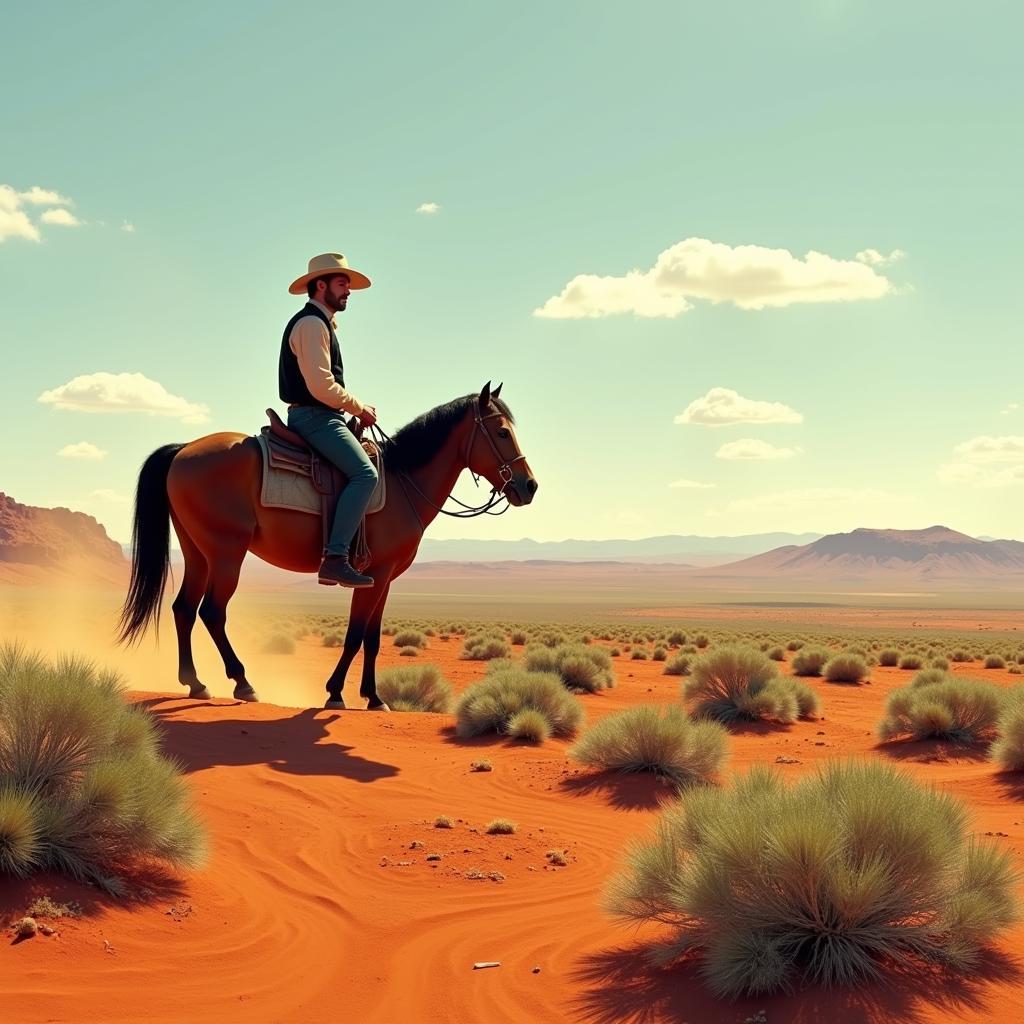The allure of “All the Pretty Horses Director’s Cut” lies in its extended exploration of Cormac McCarthy’s novel. This version delves deeper into the themes of love, loss, and the harsh realities of the American West, offering a richer understanding of the characters’ journeys. Let’s explore the nuances of this compelling cinematic adaptation.
Unveiling the Director’s Vision in All the Pretty Horses
Billy Parham’s journey in “All the Pretty Horses Director’s Cut” is a coming-of-age story set against the backdrop of a vanishing frontier. This extended version provides more context to the emotional depth of Billy’s experiences, particularly his relationship with Alejandra and his struggles with the Mexican legal system. The director’s cut reveals more of the internal conflict Billy faces as he grapples with his ideals and the harsh realities of his circumstances. It offers a more complete and nuanced portrayal of the novel’s complex themes.
Understanding the Differences Between the Theatrical and Director’s Cut of All the Pretty Horses
What makes “All the Pretty Horses Director’s Cut” distinct from the theatrical release? Primarily, the director’s cut restores approximately an hour of footage, including crucial scenes that deepen the narrative and character development. This added footage provides a more complete understanding of the characters’ motivations and relationships. It also strengthens the film’s thematic resonance, exploring the complexities of love, loss, and the transition from adolescence to adulthood with greater depth.
The theatrical cut, constrained by time limitations, sacrifices some of the novel’s intricacies. The director’s cut rectifies this, offering a more faithful adaptation of McCarthy’s work.
Why was so much footage cut from the theatrical release? The studio, aiming for a shorter runtime to appeal to a wider audience, made significant cuts to the film. This resulted in a streamlined narrative, but also sacrificed some of the novel’s depth and complexity. The director’s cut allows viewers to experience the film as originally envisioned, providing a more complete and emotionally resonant story.
Exploring the Themes of Love and Loss in All the Pretty Horses Director’s Cut
The themes of love and loss are central to “All the Pretty Horses.” The director’s cut provides a more nuanced exploration of these themes, particularly through the relationship between Billy and Alejandra. Their romance, portrayed with greater depth and complexity in the extended version, becomes a poignant exploration of young love and the devastating consequences of loss. The additional scenes enhance the emotional impact of their story, leaving a lasting impression on the viewer.
 Billy on Horseback in All the Pretty Horses Director's Cut
Billy on Horseback in All the Pretty Horses Director's Cut
“The beauty of the director’s cut lies in its ability to fully realize the emotional core of the story,” says renowned film critic, Amelia Hayes. “The restored footage adds layers of meaning to the characters’ relationships and their individual journeys, creating a more profound and impactful viewing experience.”
The Impact of the Restored Footage in All the Pretty Horses
The restored footage in the director’s cut significantly enhances the film’s pacing and character development. Scenes that were truncated or omitted entirely in the theatrical release are restored, providing a more complete and satisfying narrative arc. These additions allow for a deeper understanding of the characters’ motivations and the complexities of their relationships.
The Importance of the Director’s Cut for Fans of Cormac McCarthy
For fans of Cormac McCarthy, the director’s cut of “All the Pretty Horses” is a must-see. It offers a more faithful adaptation of the novel, capturing the essence of McCarthy’s prose and the thematic richness of his storytelling. The restored footage adds depth and nuance to the characters and their relationships, creating a more immersive and rewarding cinematic experience.
Dr. James Carter, a leading McCarthy scholar, notes, “The director’s cut is a testament to the power of a complete vision. It allows viewers to experience the film as it was intended, capturing the spirit and complexity of McCarthy’s original work.”
Conclusion
“All the Pretty Horses Director’s Cut” provides a more enriching and emotionally resonant experience than the theatrical release. The restored footage significantly enhances the film’s narrative, character development, and thematic exploration. For those seeking a deeper understanding of this complex and compelling story, the director’s cut is the definitive version of “All the Pretty Horses.”
FAQ
- What is the main difference between the theatrical cut and the director’s cut? The director’s cut restores approximately an hour of footage, deepening the narrative and character development.
- Why was the footage cut from the theatrical release? Primarily due to studio pressure for a shorter runtime.
- Is the director’s cut more faithful to the novel? Yes, the director’s cut is considered a more faithful adaptation of Cormac McCarthy’s novel.
- What themes are explored in more depth in the director’s cut? Love, loss, and the transition from adolescence to adulthood.
- Where can I watch the director’s cut? Check streaming services and physical media releases.
For further assistance, please contact us: Phone: 0772127271, Email: justushorses@gmail.com Or visit us: QGM2+WX2, Vị Trung, Vị Thuỷ, Hậu Giang, Vietnam. We have a 24/7 customer service team.